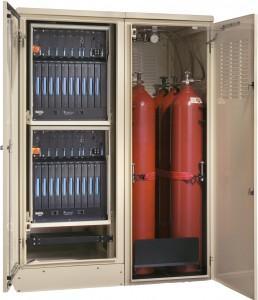I recently started working with a non-profit that promotes the commercialization of hydrogen and fuel cell technology. Since joining, I’ve learned a lot about fuel cells so I thought I’d touch on a few broad topics, including: a brief overview of fuel cells and hydrogen, how this technology is being used, and why it shouldn’t be dismissed.
In short, a fuel cell produces electricity through an electrochemical process whose only byproducts are heat and water. Without going into too much technical detail, here is a very basic explanation of how this process works:
1. Inside a fuel cell, hydrogen and oxygen are introduced on opposite sides of a membrane
2. On the hydrogen side, hydrogen atoms are split into protons and electrons
3. The membrane allows protons to pass through to the oxygen side
4. Electrons, which cannot pass through the membrane, are directed through an external circuit to power a device
5. After electrons pass through the circuit, they join protons on the oxygen side
6. The electrons, protons and oxygen combine, producing the two useful byproducts, heat and water.
A fuel cell system produces no harmful emissions, but the big question is whether hydrogen is a viable fuel. Since hydrogen produces electricity electrochemically, it is 40 to 70 percent efficient, compared to less than 30 percent for combustion engines. Furthermore, hydrogen has the potential to be a clean, renewable source of energy.

In some cases, reforming a fuel into hydrogen makes a lot of sense. Apple, for instance, is doubling the fuel cell capacity of its North Carolina data center to 10 megawatts (MW). Much of the hydrogen is sourced from biogas that is captured from a nearby landfill. Other companies like AT&T and eBay have 17 MW and 6 MW installations, respectively, that reform natural gas to create hydrogen. The systems allow them to produce clean electricity onsite, giving them cleaner air and greater energy security. Fuel cells also provide backup power to over 1,000 mobile phone towers (a tiny proportion), and have been retrofitted to thousands of warehouse forklifts to save money.
When reliable backup power is the absolute priority (e.g., data centers, defense systems, nuclear reactors), fuel cells are hard to beat. Compared to the diesel- and battery-powered emergency systems they replace, fuel cells are extremely reliable, require minimal maintenance, can be stored virtually anywhere (basements, roofs, indoors, outdoors, etc.) and can operate in extreme climates (often below freezing to around 125 degrees Fahrenheit). The system will operate as long as it isn’t submerged and has a supply of hydrogen, many of which last 72 hours per tank.
Image by ReliOn

